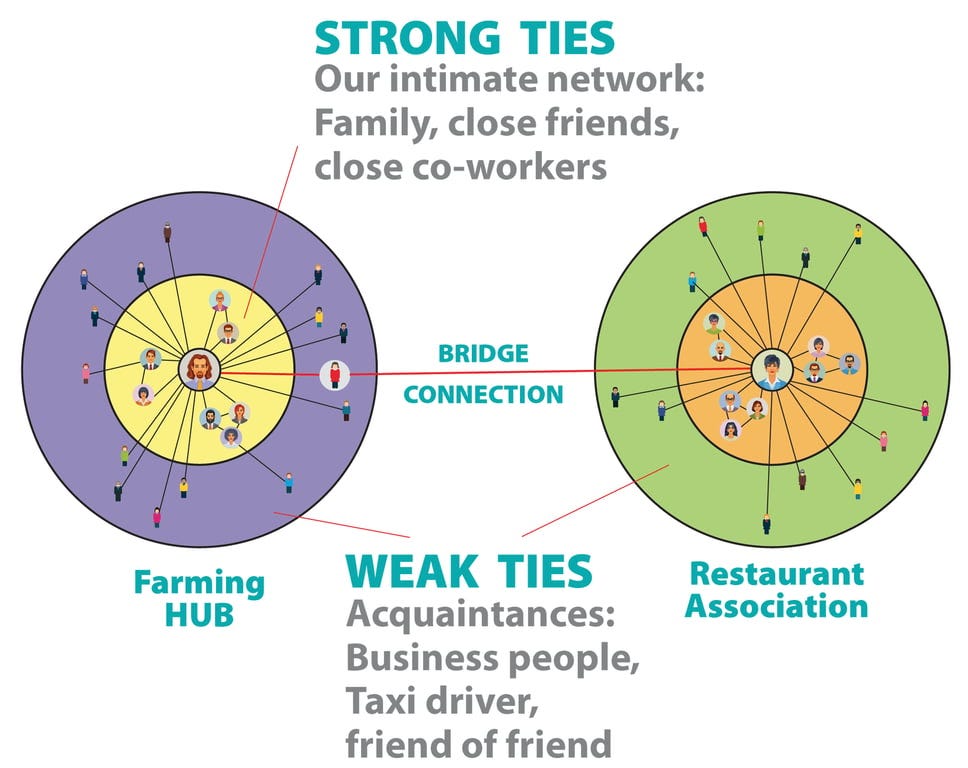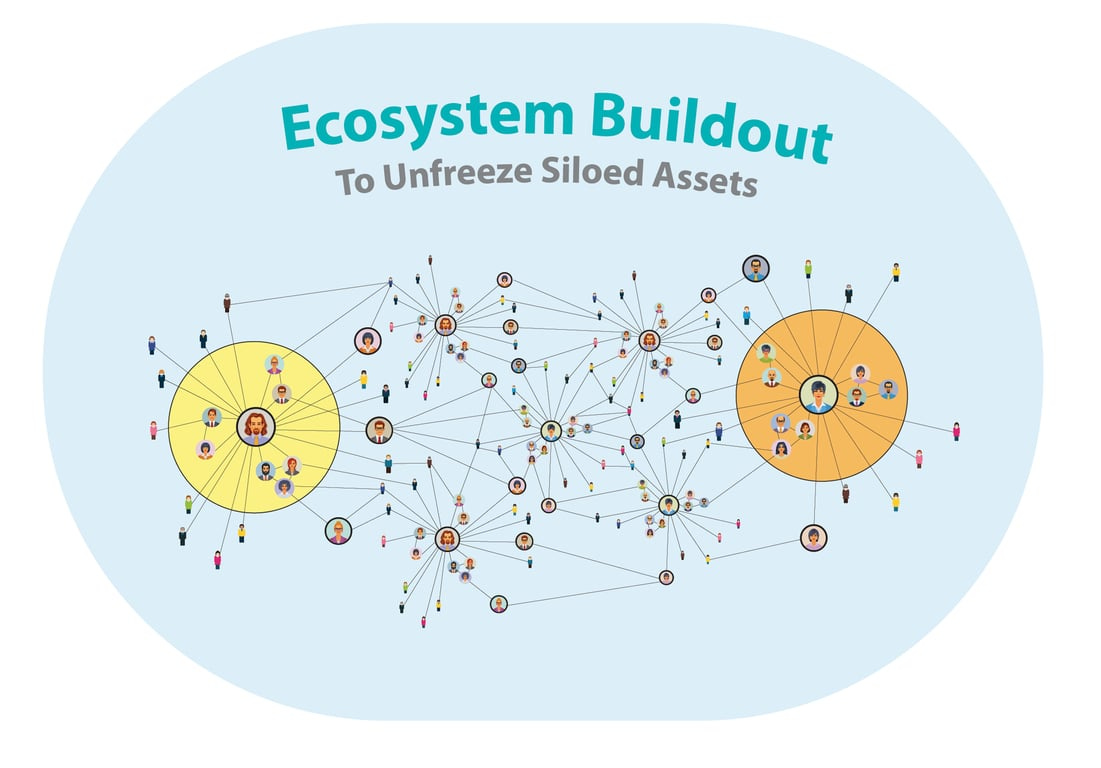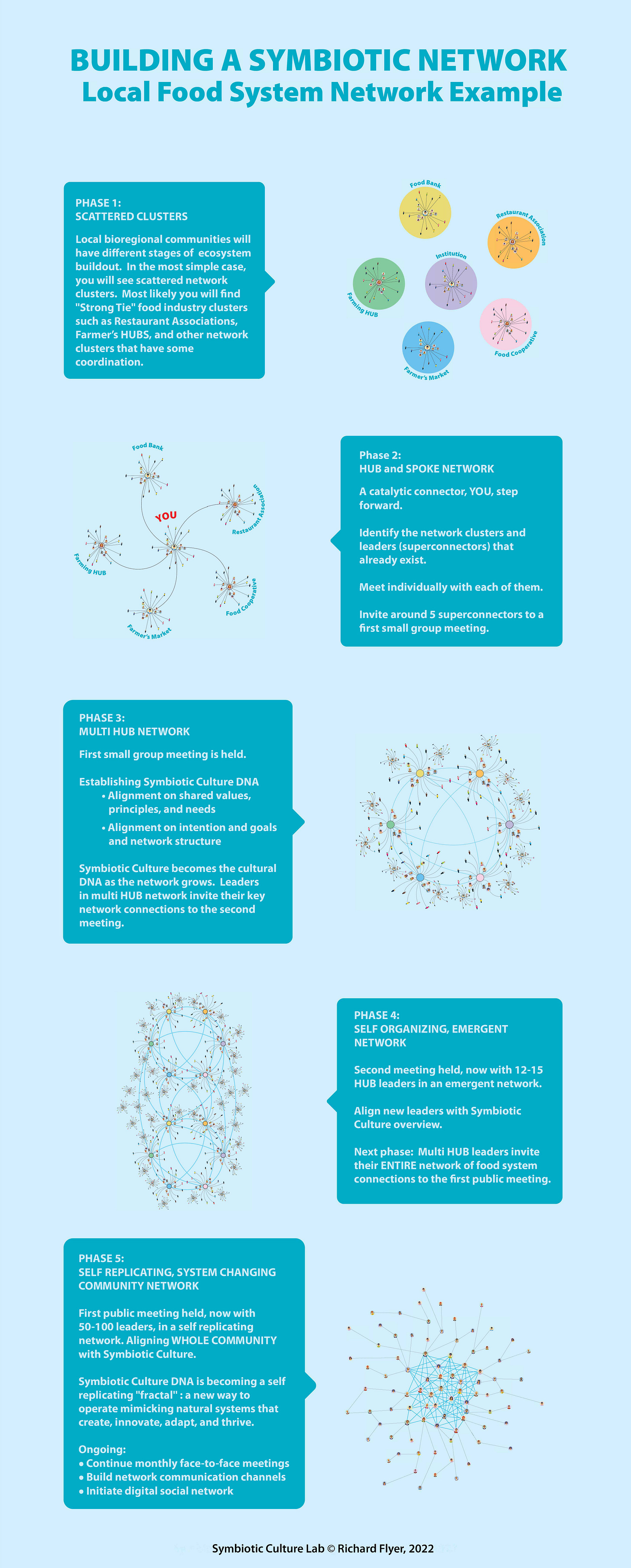Hello everyone. A repeated question has come up in comments: what’s the end game? What are the “Nuts and Bolts” (how something works) of Symbiotic Culture and Networking?
What networked structures reflect a new culture and community, and how do people in their global and local networks participate?
Fair enough!
Of course, Nuts and Bolts are essential, but the interior aspects of how humans enter into relationships with others in the community are more foundational. You could say there are “interior” Nuts and Bolts, the psycho-spiritual, internal aspects or “structures” of human consciousness that are also key to building community.
More and more people are now beginning to recognize that our age is in the midst of a “spiritual crisis.” It’s become evident that the underlying causes of war, economic inequality, political and religious polarization, climate change, and the gamut of interrelated issues come from within the hearts of mankind — and must be central to any societal solution.
Becoming a Uniter instead of a Divider does not come naturally — it results from authentic inner development and spiritual formation.
In my book, to be released on Substack December 7th, 2023, I go through the whole community-building process, starting with the spiritual, AND then will show how community networks emerge naturally from this new way of life, living a Culture of Connection.
You will learn how this approach seamlessly integrates spirituality and community action, inspired by the time-tested methods of the successful sixty-five year old Sarvodaya Shramadana in Sri Lanka, who have built a national network of 5,000 villages and urban centers.
Back to the Community Nuts and Bolts!
Symbiotic Networks are a new CONTEXT for Connecting the Good already happening in a local community. It’s not an easy task to connect/weave across the silos that exist in a community without becoming a new competitive silo! I will show you how to hold space for community and share everything I learned that doesn’t work, but more importantly, I will show you what does work.
We shared previously, in the article on Symbiotic Cultural Strategy, that people come together around shared community needs like local economy, food, energy, water, education, spirituality and service, arts and culture, and more. Imagine a new network commons that will emerge from aggregating the combined energy of local nonprofits, main street businesses, and local governments, aligned to build a culture based on mutual benefit.
Here is an example of the process applied to a local food system, but the approach would be the same in building the other networks around the other community needs. The method below is the result of on-the-ground experience and not theory.
ECOSYSTEM BUILDING
From Ego-To Eco-System
Symbiotic Networks take you beyond your familiar and comfortable tribe. (Ego-System) They are built through Weak Ties, your acquaintances, not your Strong Ties, connections with which your ego has already identified.
Open an Ecosystem Bridge
Weak Ties are key people who open bridges between siloed networks. A two-way channel of information flow now is established, e.g. between local farmers and restauranteurs.
Ecosystem Buildout
As more bridges open between networks, new connections accelerate, for example, increasing the number of farm-to-table programs in your bioregion. It's a two-way flow, sharing: Information - CapitalSales - Supply ChainDonations - Volunteers.
PUTTING it ALL TOGETHER:
This “teaser” was a small taste of what’s “under the hood” in symbiotic community network weaving and what you will learn in my book, Birthing the Symbiotic Age.
I would love to hear your thoughts in the comments below!








Hi Richard,
Thanks for sharing this - it's great.
However, I worry that "Build network communication channels" and "Initiate digital social network" don't appear until Phase 5.
IMHO symbiotic networks may be easier to create and more likely to survive if the network communication channels were established prior to, or alongside the in-person meetings.
All too often vast amounts of energy are wasted when conference, or event attendees dissipate after meeting face-to-face because no suitable communication channels have been established to keep the network alive. Even worse than this is the time wasted on the incessant debate about which tools to use for network communications - some people prefer email, some don’t like email, some like Slack, some prefer Telegram and then someone proposes a new forum, which fails to achieve enough adoption from members of the network that are already suffering from platform fatigue.
How can we move from siloed groups to effective symbiotic networks, without requiring people to adopt yet another platform or communication channel?
The answer is "by adopting shared protocols".
By adopting a shared protocol for group identification, discovery and progress updates network participants don’t need to change their existing ways of working, adopt another platform or even agree to use the same platform as every other group. They can stick with our existing tools, or preferred ways of working and benefit from wider dissemination of their work, easier discovery of related work of other groups, synergistic opportunities, and improved pathways to cooperation and collaboration at the same time.
As outlined in my post on Defining the DNA of collaboration https://open.coop/2019/03/07/defining-dna-collaboration/ the above could be achieved if groups adopted a simple protocol - a basic publishing format - which exposed:
- The group / organisation’s shared purpose
- A list of freeform tags describing the scope of their work
- A link to their RSS feed
These basic ingredients, which we have now encoded as part of the decentralised network protocol we call Murmurations, ( https://murmurations.network/ ) enable aggregators (i.e Group Coordinators at the network level) to aggregate member profiles, members news updates and even Offers and Wants to build ‘symbiotic networks’ around of any particular topic area, country, biome, or other kind of network.
By encouraging participants in symbiotic networking efforts to adopt shared protocols from the outset, rather than waiting until phase 5, it should be much easier to develop the long-lasting, resilient networks which we need to enable a collaborative regenerative economy.
This is a very cool infographic! And it's reminscient of what I attempted to do to connect the silos of my local music and arts community where I live a couple of years ago. I kind of intuited a similar approach but not nearly as fleshed out. Unfortunately I never quite got the first round of meetings together and ended up creating yet another silo of my own flavour of creative community instead!
I'm really looking forward to the book. But I'm curious about what you have shared here. Can you really connect and align a whole massive symbiotic network in just a few meetings like this? If it was this easy, couldn't any charismatic leader march into a space and become a catalytic connector? Is there something missing here? Or is it actually as easy to do as it looks on paper?
Would love to read case studies of where this has worked, what the challenges were and what the outcomes were like.
Thanks in advance!